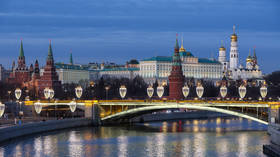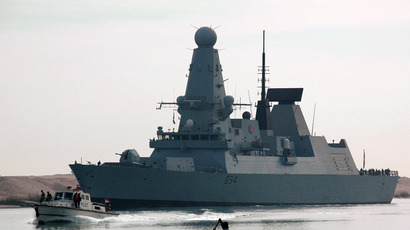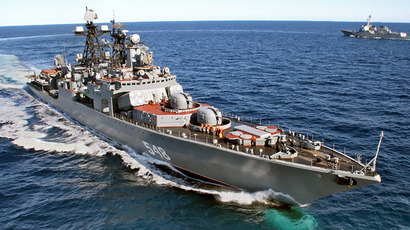Russian destroyer enters east Mediterranean to head task force – report
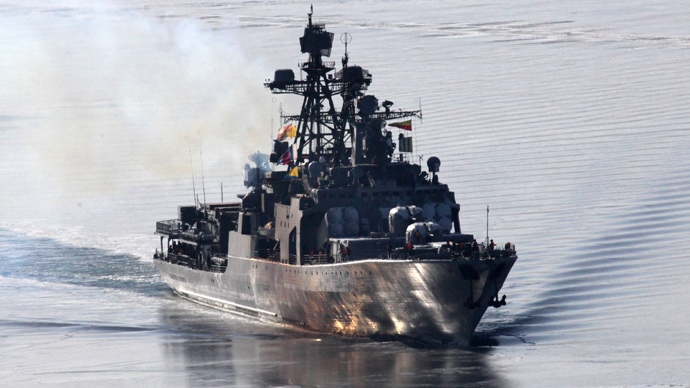
A large anti-submarine ship named “Admiral Panteleyev” reportedly arrived in the east Mediterranean Sea to join the Russian standing naval force as flagship. It comes shortly before the scheduled rotation of two Russian landing craft carriers in the area.
The Russian Navy destroyer left the Far-Eastern port city of
Vladivostok on March 19 and arrived in the designated area of the
eastern Mediterranean on Wednesday, according to sources cited by
Interfax and RIA Novosti.
Meanwhile, the Russian Defense Ministry said that large landing
craft carriers “Novocherkassk” and “Minsk” of Russia’s Black and
Baltic Sea Fleets have been dispatched to the area, and will join
the permanent Mediterranean naval force on September 5-6 in
accordance with the earlier planned schedule.
A General Staff source told Itar-Tass that reconnaissance ship
“Priazovye” also headed to the area to aid in monitoring the
situation in the region.
A senior Russian Navy Main Staff source also told Interfax that
guided missile cruiser “Moskva” will be the next vessel arriving
in the Mediterranean to replace “Admiral Panteleyev” as flagship.

“Moskva” will arrive “in 10 days’ time,” the source
claimed, adding that Russian Baltic Fleet destroyer “Nastoichivy”
and escort ship of the Black Sea Fleet “Smetlivy” will also be
joining the Russian naval unit “in the short run.” None of
these claims have been officially confirmed.
The Defense Ministry has repeatedly stressed that the maneuvers
are part of the “stage-by-stage rotation of warships and
support ships of the standing naval force in the
Mediterranean” and that the recent deployments are aimed at
monitoring the situation in the region.
“This is a normal practice of any fleet in the event of rising
tension in any given ocean or sea area,” Itar-Tass’s source
said, adding that the Russian Navy will only be increasing its
“complex monitoring” of the situation around Syria.
According to a ministry spokesman’s Tuesday statement, the key
task of the Russian standing naval force in the Mediterranean is
“comprehensive monitoring over the air, underwater, and
surface situation in the zone of its deployment.”
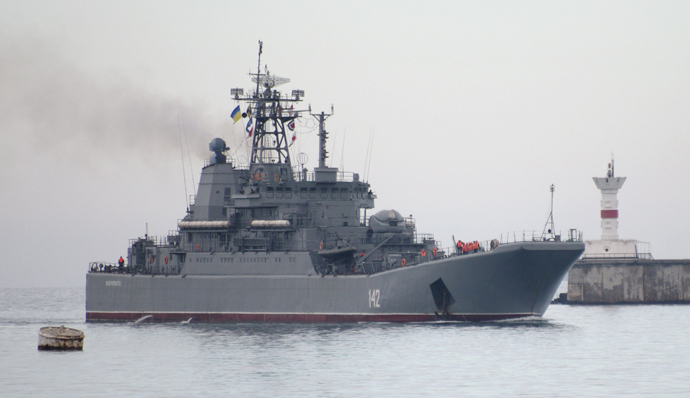
Prior to the arrival of destroyer “Admiral Panteleyev,” the naval
force consisted of landing craft carriers “Aleksandr Shabalin,”
“Admiral Nevelskoy,” and “Peresvet,” RIA Novosti reports. It also
included escort vessel “Neustrashimy” as well as a tanker and a
tugboat.
As the Russian Navy’s moves sparked speculations in the media
claiming that Russia is boosting its naval presence in the region
ahead of a possible Western strike against Syria, defense
officials said that one should not draw parallels between
relocations of warships and the Syrian crisis.
“Our military presence in this region predates the Syrian
conflict, and will continue after it, and so it would be wrong to
draw any connection between the rotation of our ships in the
Mediterranean region and events in Syria,” a senior Russian
Navy source told RIA Novosti.









